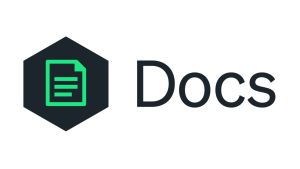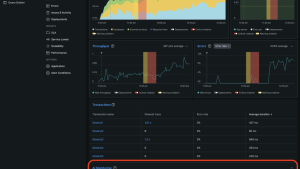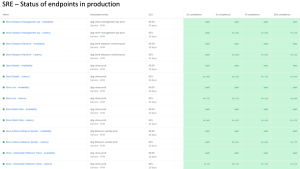Application lifecycle management (ALM) is an integral part of the modern software development process, bridging the gap between idea conceptualization and software deployment. It also plays a crucial role in ensuring software applications effectively meet their intended purpose. In this guide, we’ll explain application lifecycle management and how to integrate it into your DevOps team.
What is application lifecycle management (ALM)?
ALM is the continuous process of managing the life of an application from initial development to final retirement. It integrates different disciplines involved in software development, such as business management, software engineering, and project management, to streamline and improve the software development process to meet business goals and customer needs.
By integrating application performance monitoring (APM) into ALM, teams can gain real-time insights into application behavior, leading to better decision-making and more efficient management of resources and timelines.
The six stages of ALM
ALM comprises several stages, each vital to the successful development, deployment, and maintenance of software applications.
- Requirements management: Understanding and documenting what’s required from the software.
- Design and architecture: Outlining the technical framework and design of the application.
- Development: Actual coding and creation of the software.
- Testing: Verifying that the software functions as intended.
- Deployment: Releasing the software into a production environment.
- Maintenance and support: Ongoing upkeep and troubleshooting post-deployment.
Each of these stages is integral to the ALM process, contributing to the overall success and longevity of the software. For a deeper understanding of integrating these stages securely, refer to New Relic's Secure Software Development Lifecycle documentation.
Application lifecycle management tools
Various tools play a pivotal role in optimizing and streamlining each stage of the software development process. Depending on your specific needs, several tools are available for tracking application changes. Some tools monitor an application from start to finish, others have automatic file organization, and others require manual recordkeeping.
The best ALM tools will have the following abilities:
- Requirements management: Tools that help capture, organize, and track the requirements of a software project. They ensure that all team members clearly understand what needs to be developed and why.
- Version control systems: These tools, like Git, are essential for managing changes to the software code, documents, and other project information, allowing multiple team members to work collaboratively without conflicts.
- Continuous integration: Continuous integration (CI) relies on version control—you can’t have one without the other. With CI, you write code in discrete, more manageable tasks. CI tools automate integrating code changes from multiple contributors into a single software project. They help quickly identify issues and ensure that new code does not disrupt existing functionality.
- Testing and quality assurance: Testing tools are used to automate the testing processes like synthetic monitoring helps ensure the software is free from bugs and meets quality standards. These tools play a crucial role in maintaining the reliability and performance of the application.
- Release management: These tools streamline the process of deploying software to production, helping to schedule, coordinate, and manage software releases to ensure smooth rollouts.
Monitoring and analytics tools
Monitoring and analytics tools are vital for observing the performance of applications in real-time. They provide insights into how applications are being used and how they’re performing, enabling teams to make data-driven decisions.
Together, these ALM tools create a cohesive environment for managing the application lifecycle, ensuring that each phase is executed efficiently and effectively.
Application lifecycle management vs. software development lifecycle (SDLC)
While ALM encompasses the entire lifespan of a software application, the software development lifecycle (SDLC) is more focused on the development process. SDLC is a systematic process developers use to create high-quality, low-cost software in the shortest possible time. SDLC includes phases such as planning, analysis, design, implementation, testing, and maintenance. It's a framework that defines tasks performed at each step in the software development process.
While both ALM and SDLC are integral to software creation, they differ in several aspects:
- Scope: ALM encompasses a broader scope than SDLC. While SDLC focuses primarily on the development phase, ALM covers the application's entire lifecycle, including ongoing maintenance and end-of-life phases.
- Lifecycle stages covered: ALM addresses stages beyond development, including initial planning, ongoing support, and eventual software retirement. SDLC is more concerned with the development process itself.
- Focus on business value: ALM significantly emphasizes aligning software development with business objectives and customer needs. SDLC, while business-oriented, focuses more on the technical aspects of development.
- Collaboration and communication: ALM promotes continuous communication and collaboration across various teams, including development, operations, and business stakeholders. SDLC tends to have a more segmented approach with distinct phases and hand-offs.
Three key benefits of DevOps application lifecycle management
DevOps ALM is the fusion of DevOps practices with traditional ALM, focusing on continuous integration and delivery while maintaining high software management standards. This integration facilitates a more streamlined, responsive approach to managing the entire lifecycle of applications in the following ways.
1. Faster time to market
DevOps ALM accelerates the software development process, significantly reducing the time from conception to deployment. This speed is achieved through automation, continuous integration, and more efficient workflows.
2. Improved collaboration
DevOps principles encourage better collaboration between development, operations, and other teams. This unity fosters a more holistic approach to software development and lifecycle management.
3. Continuous delivery and deployment
Continuous delivery and deployment are hallmarks of DevOps ALM, ensuring that software updates are released reliably and frequently. This approach allows constant improvement and rapid adaptation to market changes or customer feedback.
Incorporate New Relic AI monitoring to enhance DevOps ALM, providing advanced analytics and insights. With tools like CodeStream, developers can optimize their development lifecycle with code-level metrics, leading to smarter, data-driven decisions.
Best practices for effective ALM
Adopting best practices helps integrate ALM to its most efficient capacity.
- Create a well-defined requirement document to ensure all stakeholders clearly understand the application's objectives and functionalities, guiding the development process effectively.
- Implement effective version control and configuration management, vital for tracking changes, managing different software versions, and ensuring consistency across all development stages.
- Set up automated testing to streamline the testing process, increase accuracy, and accelerate the identification and resolution of bugs.
- Continuous integration and deployment (CI/CD) practices enable a more agile and responsive development process. Continuous integration ensures that code changes are automatically tested and merged, while continuous deployment allows for faster and more frequent releases to production.
- Implementing monitoring tools and establishing feedback loops are essential for continuously assessing the application's performance and making necessary adjustments in real time.
For a deeper dive into these practices, refer to the complete guide to application log management.
Embracing effective ALM practices is crucial for the success of software applications. New Relic offers tools and insights that make implementing these practices more manageable and efficient, positioning itself as an ideal solution for effective application lifecycle management.
Les opinions exprimées sur ce blog sont celles de l'auteur et ne reflètent pas nécessairement celles de New Relic. Toutes les solutions proposées par l'auteur sont spécifiques à l'environnement et ne font pas partie des solutions commerciales ou du support proposés par New Relic. Veuillez nous rejoindre exclusivement sur l'Explorers Hub (discuss.newrelic.com) pour toute question et assistance concernant cet article de blog. Ce blog peut contenir des liens vers du contenu de sites tiers. En fournissant de tels liens, New Relic n'adopte, ne garantit, n'approuve ou n'approuve pas les informations, vues ou produits disponibles sur ces sites.





